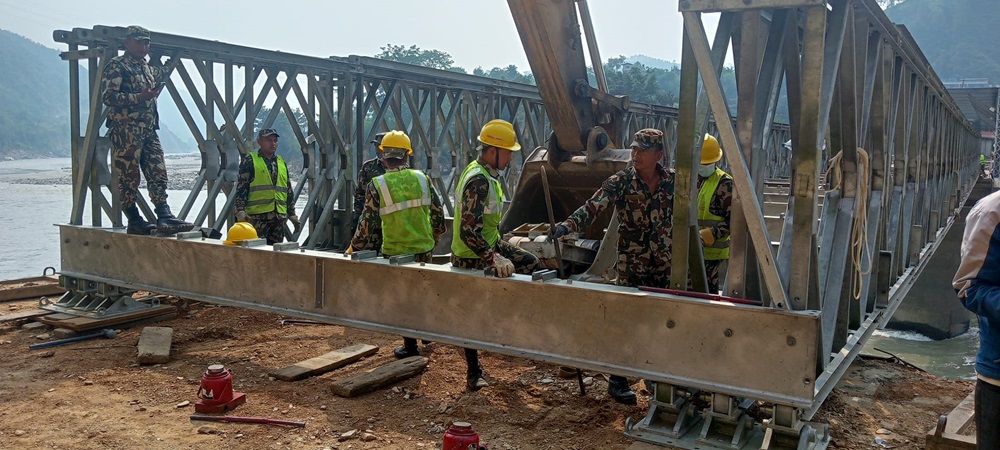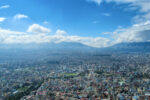RAMECHHAP: The Nepal Army has accelerated the construction of the Khurkot Bridge, a key route connecting Ramechhap and Sindhuli.
With rapid progress on the Bailey bridge, the section of the bridge on the Ramechhap side has been completed.
The connection between Ramechhap, Dolakha, Sindhuli, and Kathmandu was severed after heavy rainfall on Ashwin 10, 11, and 12 caused the Sunkoshi River to flood, washing away the suspension bridge and half of the concrete bridge on the Ramechhap side.
Rapid work is underway to restore transportation within a few days. The necessary materials and other resources are being provided through special efforts by Federal Minister of Energy, Water Resources, and Irrigation, Purna Bahadur Tamang, according to Samir Karki, spokesperson for Ramechhap Municipality and ward chair of Sukajor.
The Nepal Army has stated that the bridge section on the Ramechhap side has been connected, and further work is being carried out, with testing expected to allow vehicle movement in three to five days. Currently, leveling the bridge and laying the planks are in progress.
However, two-way traffic cannot be fully restored until approximately 200 meters of road on the Manthali side of the bridge is repaired. In the meantime, one-way traffic will be allowed with caution, according to local resident Pashupati Nyaupane.
Following the destruction of the Khurkot Bridge, residents of Ramechhap and Dolakha have been using an alternative route via the Sitkha Bridge, which connects Khadadevi Rural Municipality of Ramechhap and Sunkoshi Rural Municipality of Sindhuli. This route, however, has increased the cost of transporting goods.
Before the BP Highway was operational, residents of Ramechhap and nearby areas used an alternative route via Charikot, Mude, and Dhulikhel to reach Kathmandu. The Nepal Army expects the bridge to be fully operational for vehicle movement within three to five days.









Comment